Have you ever wondered how to grow a healthy oak tree that will thrive for generations? Whether you’re planting a majestic oak in your yard or looking to expand your garden with these robust trees, you might be wondering about the best practices to ensure strong growth. Growing oak trees can be a rewarding experience, but it’s essential to understand the needs of these mighty trees to help them flourish.
In this guide, we will explore everything you need to know about growing oak trees, from the different species of oak to how to plant and care for them properly. Whether you’re a seasoned gardener or a beginner, these tips will help you succeed in growing healthy oak trees in your backyard.
What Are Oak Trees?
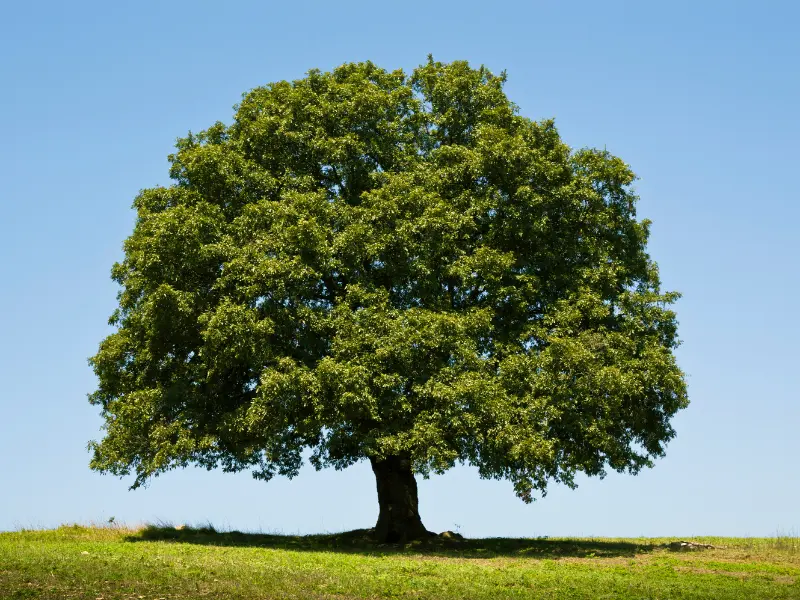
Oak trees, members of the Quercus genus, are iconic hardwoods prized for their strength, longevity, and ecological value. With over 600 species worldwide—many native to North America—oaks are a foundational tree in both forests and home landscapes. The two most common types in the U.S. are the White Oak (Quercus alba) and the Red Oak (Quercus rubra), both known for their fast growth, broad canopies, and majestic appearance.
But oaks aren’t just beautiful—they’re incredibly beneficial. Their dense shade cools yards in the summer, while their acorns support birds, squirrels, deer, and countless other wildlife species. Oaks also improve soil health, absorb carbon, and support more biodiversity than nearly any other tree genus.
Historically, oak trees have symbolized strength and endurance across cultures. In Britain, ancient oaks like the Royal Oak and Queen Elizabeth’s Oak are steeped in royal legend. Even when these giants fall, their stories and ecological legacy live on.
If you’re a gardener seeking a legacy tree—one that offers shade, wildlife support, and a piece of history—an oak might just be the perfect addition to your landscape.
Oaks and Wildlife

Oak trees aren’t just trees—they’re entire ecosystems. A single mature oak can support hundreds of species, making it one of the most wildlife-friendly additions to any garden.
Acorns are a crucial food source for birds like blue jays, woodpeckers, and wild turkeys, as well as mammals such as squirrels, deer, and even black bears. But it doesn’t stop there. Oaks also host over 500 species of caterpillars—more than any other native tree—providing essential food for baby birds during nesting season.
Their broad canopies offer shelter and nesting sites for countless animals, while fallen leaves create rich habitat for insects, fungi, and ground-dwelling creatures. In short, planting an oak is like opening a five-star wildlife hotel—your garden will come alive with sound, movement, and biodiversity.
How to Identify Oak
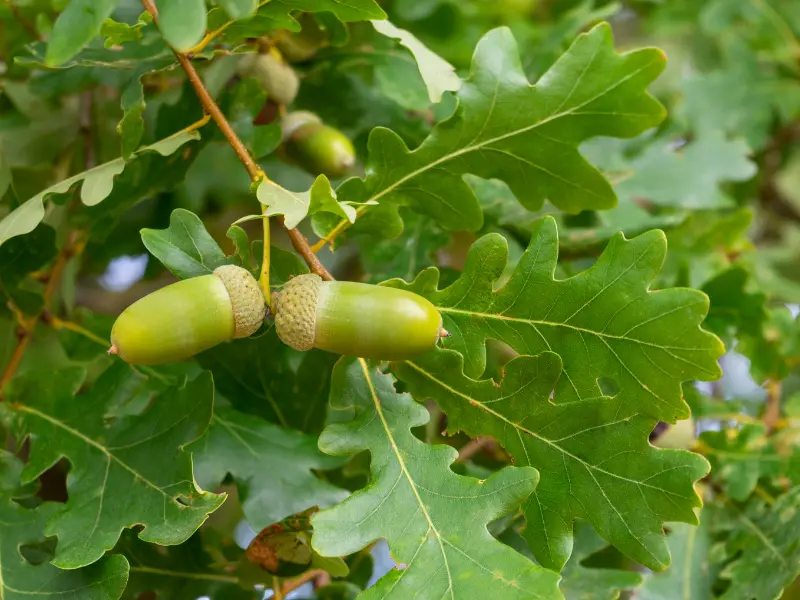
Oak trees are easy to recognize once you know what to look for. Most have lobed leaves, often with rounded tips (in white oaks) or pointed tips with bristle ends (in red oaks). In autumn, their leaves turn shades of red, orange, or brown before falling.
Their bark varies by species but is typically ridged and rough—white oaks have light gray bark that appears flaky, while red oaks have darker, smoother bark with vertical furrows.
One of the easiest giveaways? Acorns. These small, nut-like fruits develop from oak flowers and are a clear sign you’re dealing with an oak. Oaks often hold onto some of their dried leaves well into winter, especially younger trees.
How to Stratify Acorns
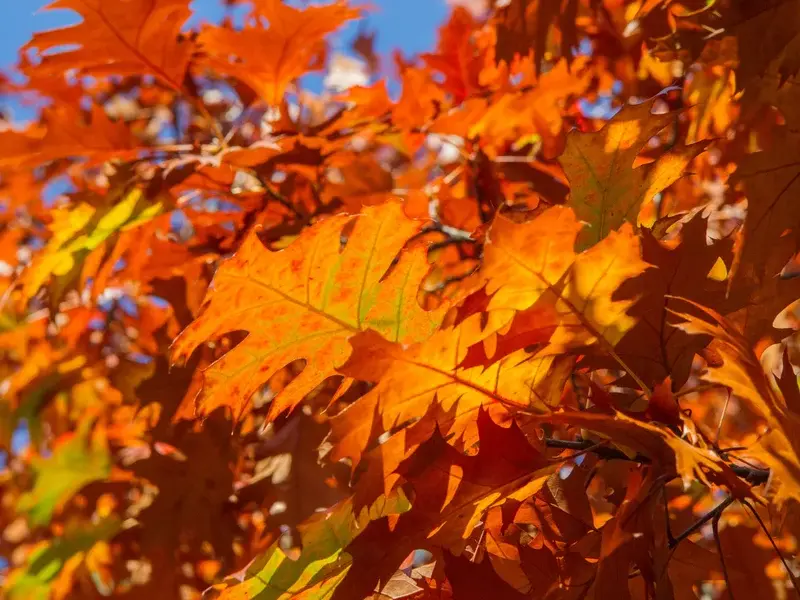
Some oak species have acorns that germinate immediately after falling, while others require a period of dormancy. Acorns from species that germinate right away typically don’t need cold stratification and will begin sprouting soon after they fall from the tree. On the other hand, acorns from species that require dormancy must be exposed to cold temperatures for a specific period (a process known as stratification) to mimic winter conditions before they can germinate in the spring.
-
Oaks with acorns that germinate immediately and do not need dormancy:
-
White Oak (Quercus alba)
-
Bur Oak (Quercus macrocarpa)
-
English Oak (Quercus robur)
-
-
Oaks requiring a period of dormancy:
-
Red Oak (Quercus rubra)
-
Black Oak (Quercus velutina)
-
Pin Oak (Quercus palustris)
-
Scarlet Oak (Quercus coccinea)
-
How to Grow Oak Trees from Acorns
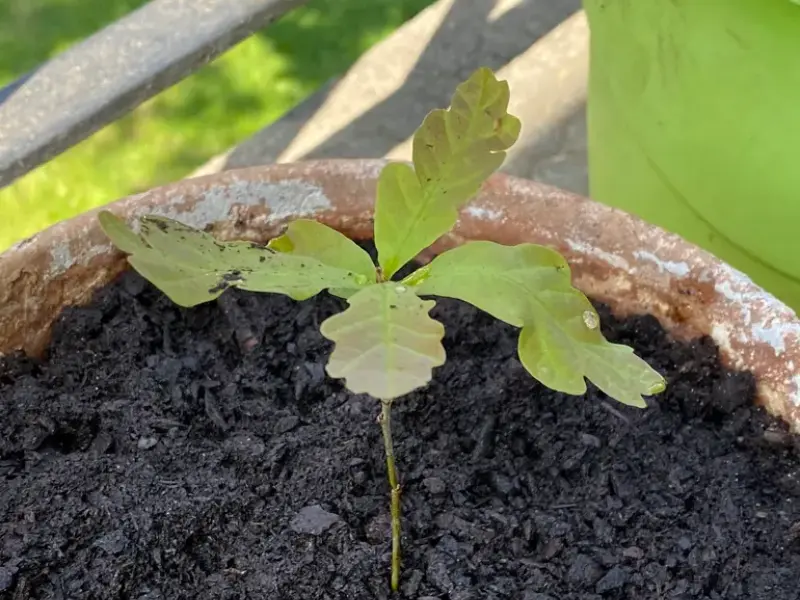
Growing oak trees from acorns is an exciting and satisfying process. Here’s how to start your oak tree journey:
1. Choosing and Preparing Acorns
Not all acorns are suitable for planting. For a successful start, it’s essential to pick acorns that are fresh and free from damage. White oak acorns (Quercus alba) and red oak acorns (Quercus rubra) are two of the most common species found in the U.S., and both are relatively easy to grow if given the right conditions.
Steps to Prepare Acorns:
-
Inspect the Acorns: Look for acorns that are firm and not shriveled. Discard any acorns with holes or cracks.
-
Soak the Acorns: Soak them in water for 24 hours to help soften the outer shell and encourage sprouting.
Tips: To test if acorns are viable, you can perform a simple water test. Fill a container with water and place the acorns inside. Viable acorns will sink to the bottom, while non-viable ones will float. Discard the acorns that float, as they are less likely to germinate. This easy test helps improve your chances of successful oak tree growth by ensuring you plant only the best acorns.
2. Best Time to Plant Oak Trees
The best time to plant oak trees depends on your local climate. Typically, fall or early spring is the best time to plant, as the weather is cooler and more favorable for root development.
-
Fall Planting: Fall allows oak acorns to undergo natural dormancy, making the tree ready to sprout in the spring.
-
Spring Planting: If you prefer to plant in spring, wait until the last frost has passed and the ground is workable.
3. Planting Oak Trees
Once you’ve selected your acorns and determined the right planting time, follow these steps to plant them:
-
Choose a Site: Oak trees need plenty of sunlight to thrive, so choose a spot that receives at least 6 hours of direct sunlight each day.
-
Prepare the Soil: Oak trees prefer well-draining, slightly acidic soil. Ensure the soil is loose enough to allow the acorn to sprout easily.
-
Planting Depth: Plant your acorns about 1-2 inches deep. If you’re planting more than one, space them at least 10-15 feet apart, depending on the type of oak.
Caring for Oak Trees
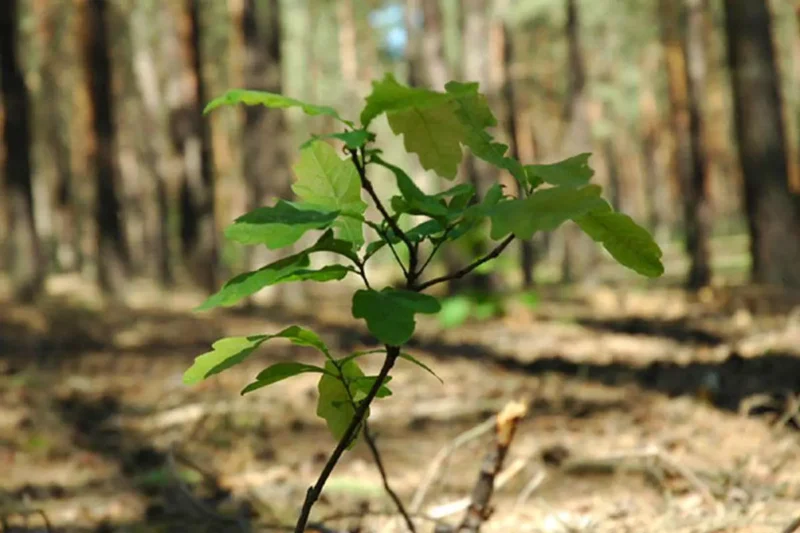
Once your oak tree begins to sprout, providing the right care is important to ensure its healthy growth. Here’s what you need to do to keep your tree thriving:
1. Watering Oak Trees
Watering is one of the most crucial aspects of oak tree care. While oak trees are drought-tolerant once they’re established, young saplings need consistent moisture to thrive.
-
Water Deeply: Water the tree deeply at the base, ensuring the water reaches the roots. Shallow watering can lead to weak root development.
-
Avoid Overwatering: Oak trees do not like to sit in waterlogged soil, so make sure the area is well-drained.
2. Fertilizing Oak Trees
While oak trees are generally low-maintenance, fertilizing can help encourage faster growth, especially in poor soil.
-
Use Slow-Release Fertilizer: A balanced, slow-release fertilizer will support oak trees without overwhelming them.
-
Fertilize in Spring: Apply fertilizer in early spring before the growing season begins.
3. Pruning Oak Trees
Pruning helps maintain the shape and health of your oak tree. For younger oak trees, pruning encourages strong growth and eliminates dead or damaged branches.
-
Remove Dead or Diseased Branches: Always prune dead or diseased branches to prevent the spread of illness and pests.
-
Timing: Prune oak trees in late winter or early spring before the tree starts its growing season.
Common Oak Tree Problems and How to Address Them
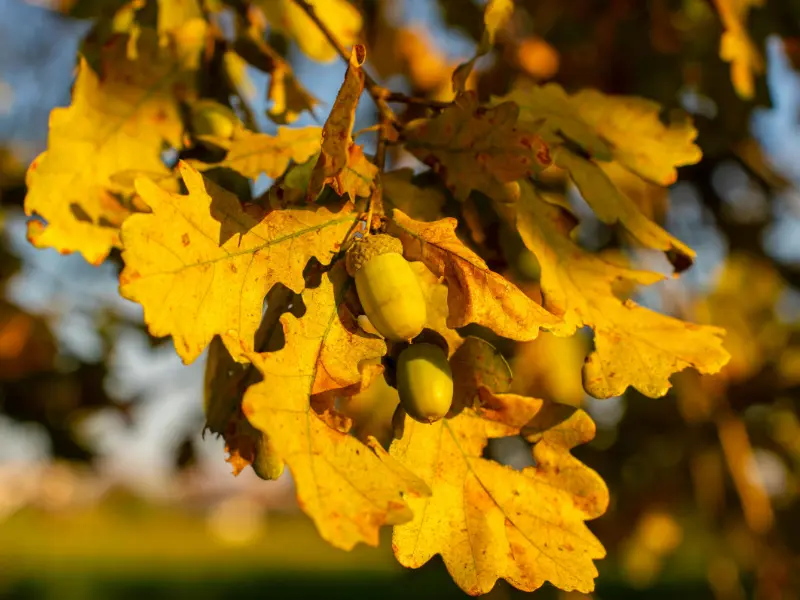
While oak trees are resilient, they are still susceptible to some common issues. Here are a few problems to watch out for:
1. Oak Tree Pests
Oak trees can attract various pests, including oak mites, oak aphids, and oak borers. If you notice holes in the leaves or the appearance of webs on branches, it’s time to take action.
-
Natural Pest Control: You can use natural remedies like neem oil or insecticidal soap to manage pests.
-
Professional Help: If the infestation is severe, consider consulting an arborist for advice and treatment options.
2. Oak Tree Diseases
Several diseases affect oak trees, such as oak wilt and powdery mildew. If your tree’s leaves are turning brown or falling prematurely, there may be an issue.
-
Fungicide Treatment: Applying a fungicide can help treat fungal infections like powdery mildew.
-
Early Detection: Regularly inspect your oak tree for signs of disease to prevent further damage.
3. Protecting Your Young Oak Tree
Young oak trees, with their tender structure, are an easy target for herbivores. Animals like rabbits, deer, and other leaf-eating creatures can damage or even destroy small seedlings. To protect your young oaks, consider surrounding them with chicken wire or sturdy plastic fencing around the trunk to keep animals at bay. In areas where deer are prevalent, extending the protective barrier higher up the tree may be necessary to ensure the safety of the upper branches and leaves. This extra layer of protection will help your oak tree grow strong and healthy.
Growing an oak tree from an acorn is a deeply rewarding experience. Over time, you’ll watch as your small acorn transforms into a towering oak. This tree will not only enhance the beauty of your landscape but also provide a valuable habitat for wildlife. Beyond its aesthetic and environmental benefits, your oak tree will become a living legacy, standing for centuries and benefiting nature and future generations. It’s a rewarding journey that leaves a lasting impact on the world around you.
Conclusion
Growing an oak tree is a rewarding experience that adds beauty, shade, and environmental benefits to your yard. With the right knowledge and care, you can nurture a healthy oak tree from acorn to full-grown beauty.
By following the steps outlined in this guide—choosing the right acorns, planting at the right time, and providing proper care—you can ensure that your oak tree thrives for years to come. Remember to monitor for pests and diseases and provide ongoing maintenance, and your oak tree will be a robust and lasting addition to your landscape.
Frequently Asked Questions (FAQs)
Q1: What’s the best time to plant oak trees?
A1: Fall or early spring is the best time to plant oak trees. These seasons allow the roots to establish before the heat of summer or cold of winter sets in.
Q2: How often should I water my oak tree?
A2: Young oak trees should be watered deeply 2-3 times a week, depending on the weather. Once established, oak trees require less frequent watering.
Q3: Do oak trees require special soil conditions?
A3: Oak trees prefer well-drained, slightly acidic soil. Avoid heavy clay soils, which can retain too much water.
Q4: How do I protect my oak tree from pests?
A4: Regularly check your tree for pests like aphids or borers. Natural remedies like neem oil can help control pests. If infestations are severe, consult a professional arborist.
Q5: How long does it take an oak tree to grow?
A5: Oak trees grow slowly, especially in the first few years. On average, it can take 10 to 20 years for an oak tree to reach a height of 10 to 20 feet. It may take anywhere from 30 to 50 years for an oak tree to reach maturity and start producing acorns. Full maturity, where the tree reaches its maximum size and lifespan, can take several hundred years.
